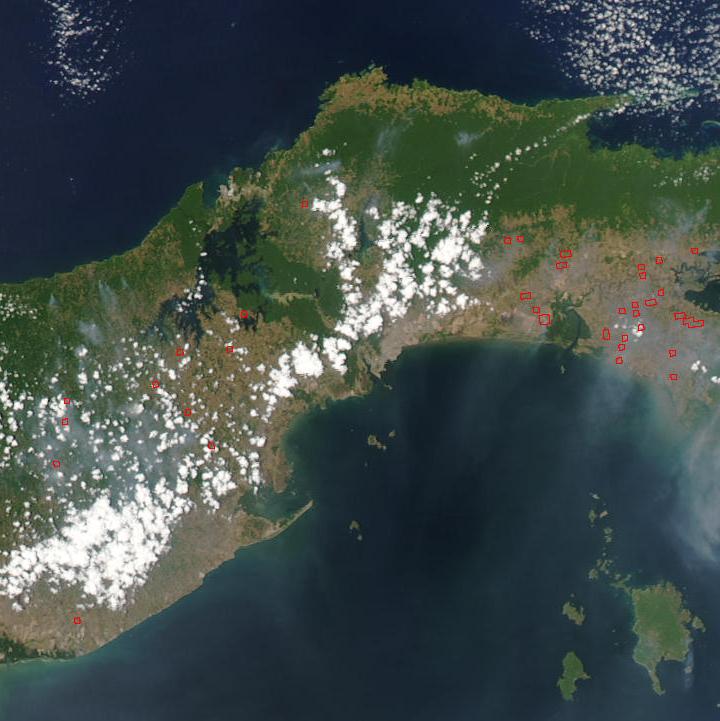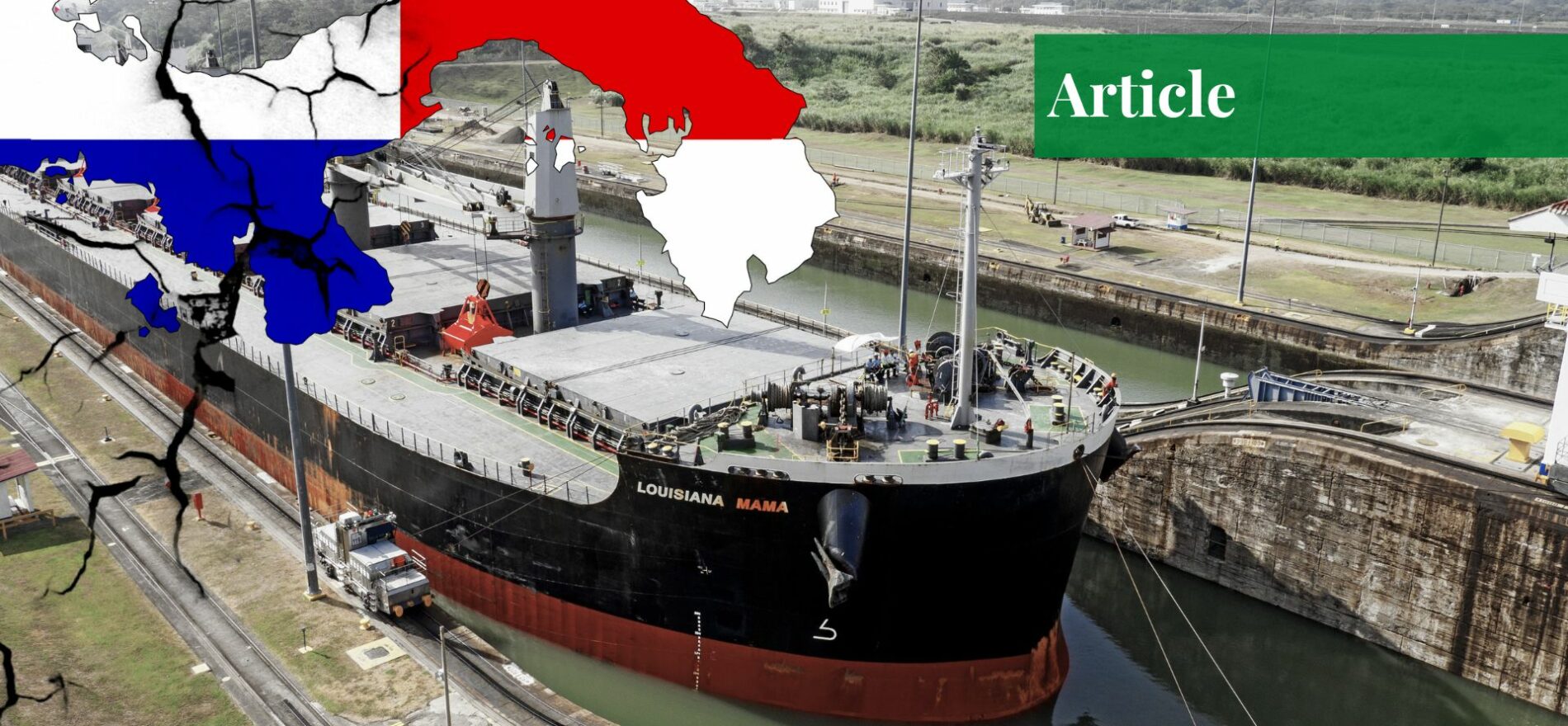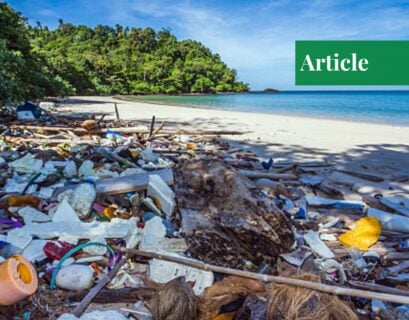Ms Areeba Aftab is currently pursuing a degree in International Relations from the International Islamic University, Islamabad.
Significance of the Panama Canal
Around 40 percent of the global cargo traffic and six percent of international maritime shipping passes through the famed Panama Canal, primarily from the United States, Japan, and China. It also separates North America from South America. Being one of the world’s most successful shortcuts, about 270 billion dollars of trade each year rides the Panama Canal.
The important waterway transports everything from US energy to crops from Latin America, and container ships frequently use it to transport manufactured items like toys and garden furniture throughout the world. The canal is used by almost 40 percent of containers travelling from Asia to Europe, thus its effects could extend far past North America.
Water Sources of the Canal
This conduit for maritime trade is dependent upon two artificial lakes, Alhajuela and Gatun. These lakes have been depleted by the lack of rainfall. Boris Moreno, the canal’s vice president of operations, says, “The canal runs on fresh water from the lakes that are man-made and are reliant on rainfall. Panama is one of the wettest countries in the world but this year has been an unprecedented dry season and our lake levels are close to the minimum.”

A backlog of more than 200 waiting vessels has developed as a result of the reduction in the number of passing vessels to 32 per day by the authorities, prompting delayed shipments. Some ships are being forced to slow down and carry up to 40 percent less cargo to avoid hitting the bottom. The international shipping industry is part of the problem, responsible for about three percent of planet-warming greenhouse gas emissions, about as much as Japan.
Problems for the Local Population
The lack of rain impacts in various ways, mainly and mostly reducing water reserves. The water in these lakes is not only needed for ships to transport goods to the consumers but there are also far-reaching effects on the local population of Panama. The Panama Canal basin serves as the primary water source for over half of the nation’s 4.3 million inhabitants. These water shortages have resulted in issues with water distribution, prompting protests in various regions of the country.
Experts caution that given the uncontrolled urban growth that is forming around Panama City, there may be water disputes between the canal and local communities. The authorities stated, “We don’t want to engage in a philosophical conflict over water for Panamanians or water for international commerce”. The Canal administration is attempting to sustain business while also carrying out a social duty, like providing drinking water for people.
Effects on Businesses and Consumers
The stressed water situation is being termed as ‘A crisis that is going to affect American consumers.’ Two-thirds of canal traffic is either coming from or going to the United States but that flow of goods is at risk because this 50-mile-long system of locks and lakes that connects to oceans is actually above sea level and does not run on ocean water.
Vessels have been waiting almost four days on average at the waterway now. Some ships have even experienced delays of up to 20 days, and these delays have had a domino effect, that is congesting important ports. Businesses may experience delays replenishing supplies in time for Christmas if decreased container loads persist. The shipping giants have warned about Christmas merchandise being impacted if the drought drags on and shippers are forced to use longer routes. The goods will be more expensive and late. The reach into commodity markets is much more extensive.
Ships transporting refined fuel, such as petrol and diesel, have seen their rates rise recently across the Atlantic Ocean since fewer ships are available due to delays at the Panama Canal. The situation for liquefied petroleum gas carriers is identical. That’s partly because container ships are given preference while transiting via the canal over other kinds of ships.
In 2022 alone, 518 million tons of cargo was carried by more than 14,000 ships through the canal, pitching in $2.5 billion to the Panamanian treasury. Hence, there is concern among authorities that this operational unpredictability might cause certain shipping firms to prefer alternate routes, underscoring the urgency of identifying lasting measures to ensure the canal’s sustained functionality.
Additionally, the drought affects the canal’s dealings with its largest vessels, those that pay the highest tolls, as they are unable to traverse the canal. Where possible, some investors and businesses are looking to dump products delivered by container on the US West Coast and move them across the country using inland railways. Given the congestion at the canal, fewer ship owners are willing to charter for the US Gulf to East Asia route.
Initiatives in Progress
Amidst all this crisis and sea traffic jam situation occurring in the Panama Canal, creating a waiting room for large vessels, one thing is evident—new water resources are vital to find, not only in Panama but soon in the world because of the dire situation that we could be facing in a few years caused by climate change.
As marine stakeholders contend with this situation, many are looking for cutting-edge solutions to lessen the effects. Like, coastal shipping, once a less desirable option, is rapidly gaining popularity as a serious alternative. Shippers are now investigating options that may have previously been disregarded, such as the possibilities of other canals and routes.
The Panamanian authorities have focused on the following:
- Moving a single ship through the locks takes 55 to 125 million gallons of water depending on its size much of that is flushed into the ocean but the canal authority is now trying to store and reuse as much of it as possible.
- It is also considering diverting water from other rivers.
- The authority that runs the canal has already called in the US Army Corps of Engineers to come up with a plan to divert rivers into Gatun Lake.
- Building more reservoirs because the lakes feeding the canal are also the main source of drinking water for nearby Panama City. Climate change is making the tropics hotter and dry spells longer.
Conclusion
To conclude, the Panama Canal issue provides us with significant insights. Initially, during a summer marked by record temperatures and widespread forest fires across portions of the Northern Hemisphere, the desiccated Panama Canal serves as a further reminder of how a warming planet is anticipated to disrupt worldwide trade. Additionally, the flexibility of the maritime industry is prominently showcased as logistics providers and project cargo managers formulate strategies to mitigate disruptions.
The obstacles presented by the delays in the Panama Canal have compelled the trade industry to reconsider its operational resilience and distribute risks among different transportation modes. However, it raises important questions: could this incident trigger a lasting alteration in trade pathways? How might this encounter reconfigure forthcoming logistics approaches? Despite the historical centrality of the Panama Canal, could this occurrence stimulate the development of a more widespread and adaptable network of maritime routes?
The Panama Canal, in many ways, is the Panama economy, which will make the impact on individuals to be significantly adverse. Amidst prevailing uncertainty, one certainty prevails – the maritime sector persists in its unwavering resilience and innovative adaptability.
If you want to submit your articles, research papers, and book reviews, please check the Submissions page.
The views and opinions expressed in this article/paper are the author’s own and do not necessarily reflect the editorial position of Paradigm Shift.


















